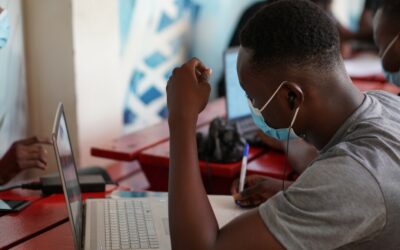When working on a workforce development strategic plan, it is highly likely that it will involve a need for curriculum development to fill a gap. As a former high school English teacher and charter school curriculum advisor, I know firsthand that designing curriculum requires input from multiple stakeholders and tremendous amounts of data. However, the most important factor is honoring and valuing the individual who may engage with the newly-designed curriculum.
We have witnessed quite the workforce shakeup during the pandemic, as many were displaced and explored rebooting their career pathway in a new direction. Others have looked to up-skill and re-skill to launch into a new career or to enhance their skill set. This can be a daunting task, depending upon age and experience. Let’s face it, many of us do not know what we want to do when we grow up and as a result have worked various jobs in numerous industries. This often means that individuals may have obtained a wealth of transferrable workforce skills but may be clueless as to their value.
Finding solutions for individuals where their prior work experience is honored has been a challenge. Valuing work experience and identifying transferrable skills is a gateway towards an accelerated path towards a new career. Training centers and community colleges are beginning to make this part of their best practices with admissions. It’s not an easy route, as there is a lot of work to be done to figure out an individual’s transferrable skills.
By honoring prior experience, a faster path towards a new career can be delineated. For instance, if someone had been a server in a restaurant and was looking for a different career path, such as office management, they already have experience with client communications. They know how to speak with customers, are experienced with de-escalation, and yet, they may not see their skills as transferrable. This is where career coaches or admissions specialists could illuminate them on how to discuss their skills and give them credit. These skills are not siloed.
Language and semantics may be the key. Learning how to speak the proper language may be the difference with a higher paying job with benefits. Positively spinning their experience may simply be a matter of how they phrase it.
So often training programs focus mainly on their end-users, which are businesses, but their end user should equally consider the student. You are not just recruiting the students to meet your needs, but the needs of the student will define their rate of success. Learning what is unique and special about that student will identify how can they leverage their experience and feel valued throughout the process.
This approach can open doors to populations that organizations may not have reached out to before, including those with disabilities. Intensive studies individuals with disabilities, barriers to entry, go to those individuals directly and bring back that data for priorities and action items to help support these organizations
With a traditional model of in-person learning, many college students guffawed at paying the same tuition rates to have their courses taught online. They largely felt that the virtual courses lacked the same value and couldn’t justify the expense. These circumstances have created some distrust in the educational system. However, virtual courses that may not have been available in that manner prior to the pandemic, have opened doors for many who found an opportunity.
When looking at training options, what is the potential for making the curriculum accessible for everyone? For trainings to be inclusive, accessibility should come up in the strategic planning meetings. Data shows that providing accessibility for in-demand career sectors create opportunities to potentially engage new populations that may not have been considered before a virtual component was implemented.
There is also a need to be forward thinking. For instance, the automotive industry is transitioning to electric vehicles and within five to ten years, this necessitates a shift in the training curriculum. Strategically aligning action items with the future data, a region can engage with targeted populations and ensure the accessibility. In this electric vehicle example, conversations around adjusting the curriculum can begin now, and by engaging an inclusive group of individuals, opportunities for expanding the workforce may be identified.
At TPMA, we have been people-focused since inception. We understand the importance of the individual in a community’s ecosystem. A workforce strategic plan should be as holistic as possible, creating an inclusive picture of what you want to accomplish. It starts with a focus on people.
About the Author
Nioka Clark
Senior Project Consultant

